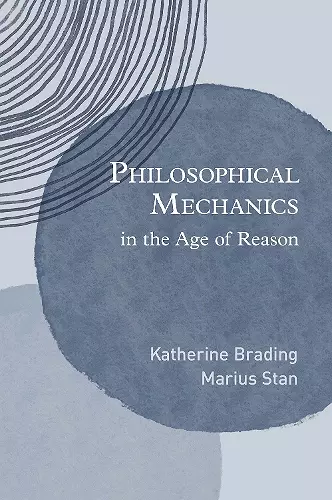Philosophical Mechanics in the Age of Reason
Marius Stan author Katherine Brading author
Format:Hardback
Publisher:Oxford University Press Inc
Published:19th Jun '24
Should be back in stock very soon

From pebbles to planets, tigers to tables, pine trees to people; animate and inanimate, natural and artificial; bodies are everywhere. Bodies populate the world, acting and interacting with one another, and they are the subject-matter of Newton's laws of motion. But what is a body? And how can we know how they behave? In Philosophical Mechanics in the Age of Reason, Katherine Brading and Marius Stan examine the struggle for a theory of bodies. At the beginning of the 18th century, physics was the branch of philosophy that studied bodies in general. Its primary task was to provide a qualitative account of the nature of bodies, including their essential properties, causal powers, and generic behaviors. Pursued by a variety of figures both canonical (from Leibniz to Kant) and less familiar (from Du Châtelet and Euler to d'Alembert and Lagrange), this proved a difficult task. At stake were the appropriate epistemologies and methods for theorizing about the natural world. Solutions demanded the combined resources of philosophy, physics, and mechanics: what Brading and Stan call a “philosophical mechanics.” Brading and Stan analyze a century of widespread, concerted efforts to solve “the problem of bodies,” they examine the consequences of the many failures, both for the problem itself and for philosophy more generally. They reveal relationships among disparate themes of 18th century physics and philosophy, from the nature of matter to the motion of a vibrating string; causation to the principle of least action; and the role of subtle matter in collision theory to analytic mechanics. All of these, Brading and Stan argue, are related to the eventual emergence of physics as an independent discipline, autonomous from philosophy, more than a century after Newton's Principia. This book provides a new framing of natural philosophy and its transformations in the Enlightenment; and it proposes an account of how physics and philosophy evolved into distinct fields of inquiry.
The writing is engaging but technical and aimed at specialists. Brading and Stan characterize the book's intended audience as philosophers of physics, science, and metaphysics and those interested in the history of modern philosophy. A strong, nuanced, technical work with a limited audience. * Choice *
This book is a major contribution to the future study of the history and philosophy of physics and natural philosophy writ large ... This book itself addresses a veritable gap in scholarship and the authors have painstakingly provided a much-needed account. There is no doubt that any future work in this domain will be inspired by this work and will have to critically respond to it. * Tzuchien Tho, The Leibniz Review *
ISBN: 9780197678954
Dimensions: 157mm x 224mm x 51mm
Weight: 771g
448 pages